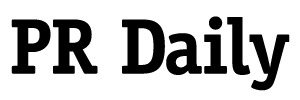What lessons should PR pros take away from 2017?
The past twelve months have been a tumultuous ride for communicators and media experts. What changes should the industry learn from to avoid repeating their mistakes?

2017 was a whirlwind—never a dull moment.
Here, at the beginning of the new year, it’s time to stop to reflect on what PR pros have learned—and what they have yet to figure out.
Here are seven lessons to take away from 2017:
1. Fake news is now just a part of our reality.
Post-truth was the word of the year in 2016. Like it or not, the public no longer trusts the news media—and this directly affects what public relations professionals do.
So, what does that mean for communicators? It means that it’s more important than ever for brands to build a community of loyal fans and followers, and it means industry insiders need to double down on fact-checking and working with reputable journalists and publications.
2. A strong crisis response game is paramount.
2017 came with its share of major brands in crisis: United Airlines, Pepsi and Uber headline a long list.
Become a Ragan Insider member to read this article and all other archived content.
Sign up today
Already a member? Log in here.
Learn more about Ragan Insider.


